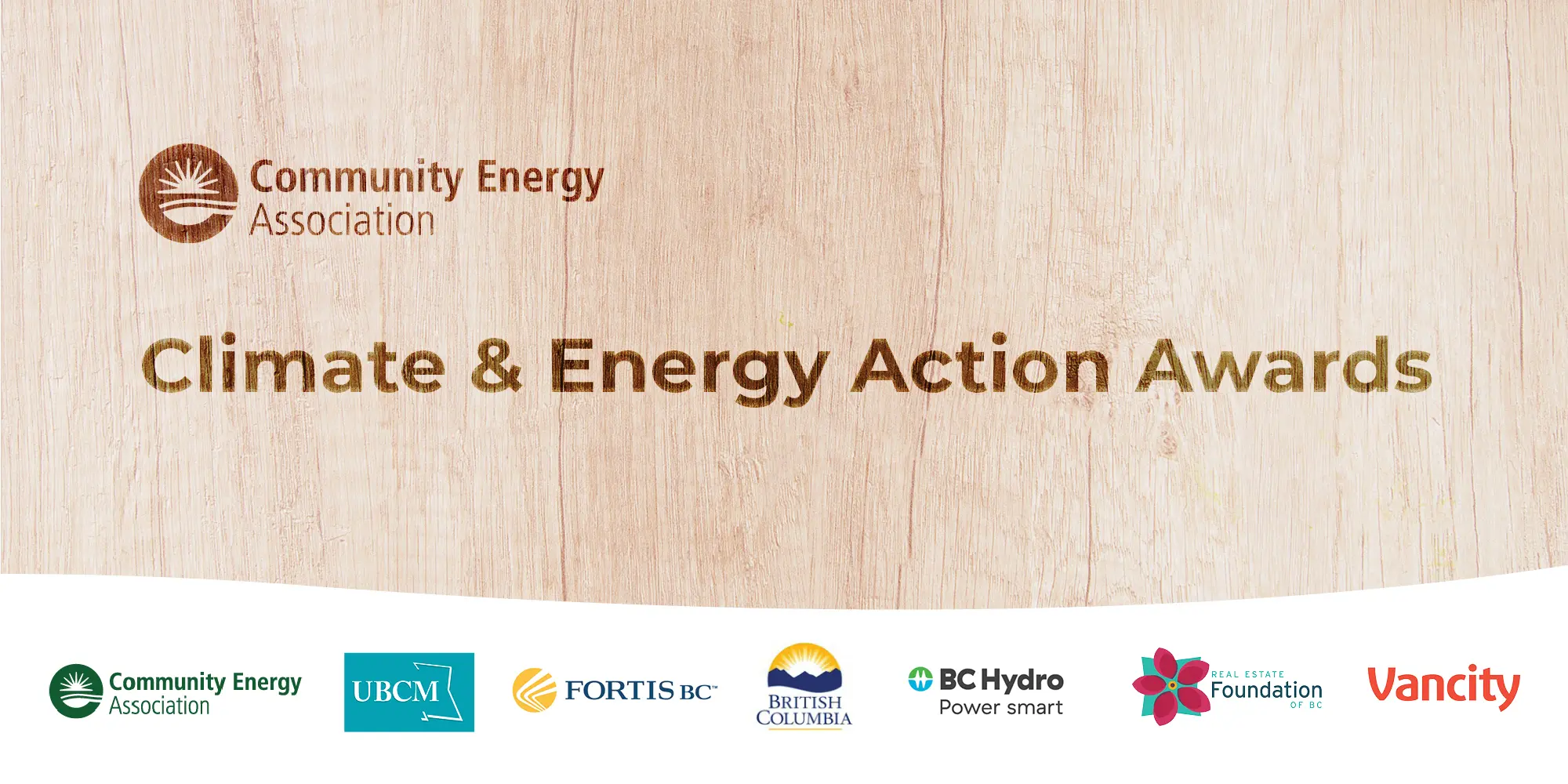
Nominees for 2025
We know that local governments are on the front lines of climate action, and that climate is only one of myriad responsibilities on their plates. In this context, it is sometimes hard to figure out exactly how to bring together all the ingredients to make a greenhouse gas mitigation or adapation project succeed.
That is why the Climate & Energy Action Awards recognizes and amplifies the incredible models provided by municipalities, regional districts and Indigenous communities in BC. Nominees regularly range across all of this province's distinct climate zones and include communities large and small, rural and cosmopolitan. And every nominee shows the magic that has to happen to turn good intention into a real, working, locally-based climate initiative.
The 29 nominees for 2025 are described below. The awards are adjudicated by a jury of impartial, outside experts and will be formally presented at the Union of BC Municipalities Convention on Sep. 24, 2025 in Victoria, BC.
Note: The categories used below are for presentational purposes only; they will not be used when determining award winners.
Interior and Northern BC

DISTRICT OF MACKENZIE
Energy upgrades to local recreation centre
The need to replace the arena floor in its 50-year old arena presented the District of Mackenzie with an opportunity to reduce energy consumption, operating costs, and extend the facility’s life. The new floor includes piping that is part of a heat recovery system with modern HVAC units, solar panels, and heat pump to improve air quality, comfort, and water and energy efficiency. The system, installed in 2024, will result in estimated annual energy savings of 28%, annual GHG reduction of 158 tonnes, and annual water reduction of more than 1.3 million litres.
CITY OF KAMLOOPS
Employee bike purchase loan program
“Ride Easy Kamloops” offers employees an interest-free loan toward the purchase cost of a new bike or kick scooter and helmet. The loan is then repaid through payroll deductions. Since 2024, 63 employees have received the taxable benefit, helping to foster a commuter cycling culture in the city.
CITY OF KELOWNA
Climate Resilient Kelowna Strategy
The Climate Resilient Kelowna Strategy is the City of Kelowna’s new community climate action plan aiming to reduce community greenhouse gas (GHG) emissions by 40% by 2030 (and net-zero emissions by 2050) while helping build resilience to climate change impacts. The strategy identifies 10 focus areas, 28 strategies and 153 actions for the City to implement over the next five years to support a low-emission, resilient community. The City has formed an internal Climate Action Team, an external working group and developed the Climate Resilient Kelowna Tracker that enables the public to review key strategy components and track implementation progress.
DeHart Community Park carbon neutral design
This new park in Kelowna’s Okanagan Mission neighbourhood was designed to be carbon neutral, meaning the carbon emissions associated with the park’s construction (including paths, courts, and other amenities) and operation will eventually be offset by the park’s green spaces. The park vision also prioritized investment in ecosystem services, green infrastructure, and resiliency measures to mitigate and adapt to a changing climate. Additionally, the project focused on habitat and ecosystem restoration, pollinator plants and water-wise elements.
BREATHE Project DIY air purifier workshops
In 2024, the Climate Action & Environmental Stewardship Department at the City of Kelowna collaborated with the BREATHE Project at Simon Fraser University to host multiple workshops for community members to build their own free air filters using a box fan, a furnace filter and duct tape. This type of DIY air purifier has been proven to clean indoor air as effectively as a retail air cleaner.

BREATHE Project workshop with the OCCA Communities Association, which serves multicultural communities across the Central Okanagan.
NISGA'A NATION
Climate Leadership Plan
Nisga’a Nation has been taking decisive action on climate mitigation, adaptation and resilience through a variety of actions and activities that are based in their Nation but have implications and value for the Northwest part of BC as a whole. This includes a Climate Leadership Plan featuring a baseline GHG inventory, a low-carbon transportation plan, healthy home energy retrofits, and a high-performance building standard for new construction. The plan’s development has featured the involvement of multiple partners and community engagement throughout the region.
CITY OF PENTICTON
E-Mobility Strategy
A new electric mobility strategy has focused the community’s efforts to accelerate adoption of zero-emission transportation. Work has included internal city fleet conversion, EV Ready requirements for residential and commercial buildings, and public engagement on desired locations for bike infrastructure, which has been installed. The city also constructed new bike lanes between Okanagan Lake and Skaha Lake, improving accessibility to active transportation through the community and city centre.
ULKATCHO FIRST NATION
Canada’s largest off-grid solar farm
Ulkatcho First Nation (UFN) is constructing a 3.8MW, 30-acre solar farm to reduce diesel consumption in the community by nearly two-thirds. The solar energy produced locally by the Ulktacho Energy Corporation, which is 100% owned by UFN, will be distributed by BC Hydro and significantly reduce the greenhouse gas emissions associated with the local electricity supply. The project is expected to begin offsetting diesel by 2026.
Lower Mainland
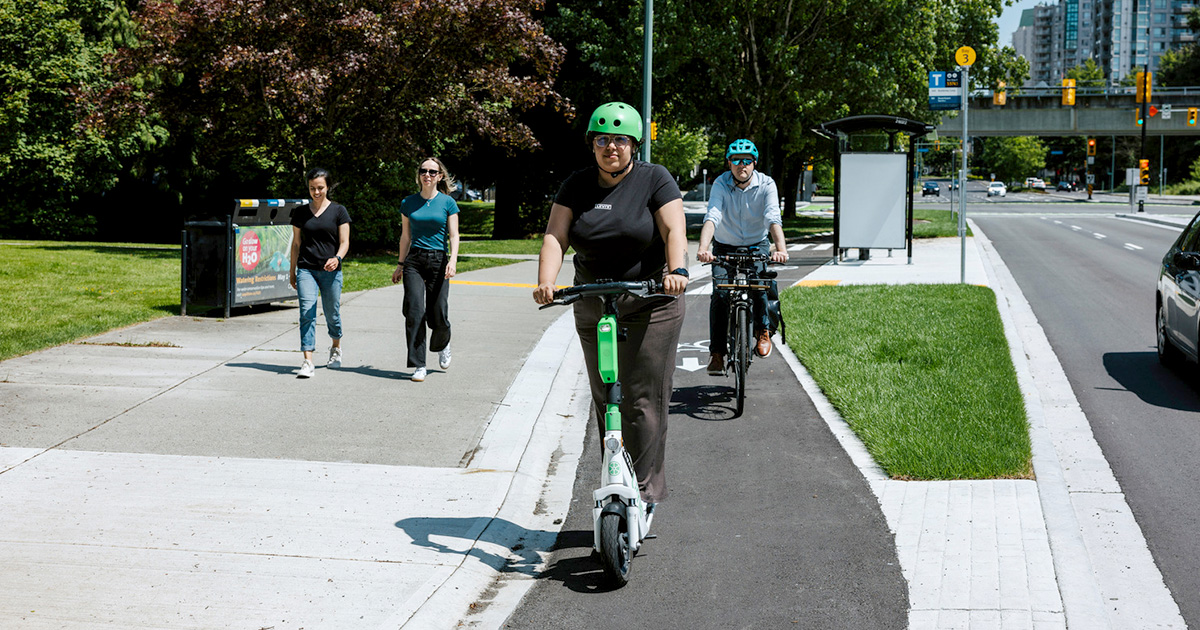
CITY OF COQUITLAM
Guildford Way multi-modal transportation improvements
This multi-phase project fostered collaboration between many community groups to improve active transportation on Guildford Way, a key regional connection. The most recent phase – completed in 2025 – incorporates raised micromobility lanes, wider sidewalks, bus stops, accessibility features, street lighting, and the first fully-protected intersection in Metro Vancouver’s Tri-Cities.
TOWNSHIP OF LANGLEY
Building industry education
The Township of Langley’s Green Buildings Department has been encouraging improved construction practices by offering educational programs to the local building industry. Sessions have covered the Energy Step Code, Zero Carbon Step Code, passive design, and more. The education and support from the City is intended to improve compliance with newly crafted policies.
CITY OF MAPLE RIDGE
Resilient Future 2050
Resilient Future 2050 is the City of Maple Ridge's integrated climate action and resilience plan, launched in 2025 following 18 months of research, analysis, and community engagement. Its goal is to build a coordinated and equity-driven pathway to net-zero emissions while preparing the City for increasing climate-related hazards such as heat waves, wildfires, and flooding.
NEW WESTMINSTER
EV-Ready requirements for new, non-residential buildings
City of New Westminster has updated its Zoning Bylaw to require that 50% of parking spaces in new, non-residential buildings be EV Ready, meaning that they are pre-wired to support Level 2 chargers. This policy aims to ensure infrastructure is built during the most cost-effective stage in a building’s life cycle, enabling easier EV charger expansion and supporting greater EV adoption.
təməsewtxʷ Aquatic and Community Centre
The təməsewtxʷ Aquatic and Community Centre is Canada’s first all-electric aquatic facility to achieve the Canada Green Building Council’s Zero Carbon Building–Design certification. In fact, this new facility, which is nearly 11,000 square metres, emits 92% fewer GHG than the previous pool. Long-term operational efficiency will be delivered via passive design, natural ventilation, orientation to maximize daylight, and advanced mechanical systems using heat pumps, solar photovoltaics, and energy recovery technologies. More than 3,000 residents contributed their input during an extensive process.
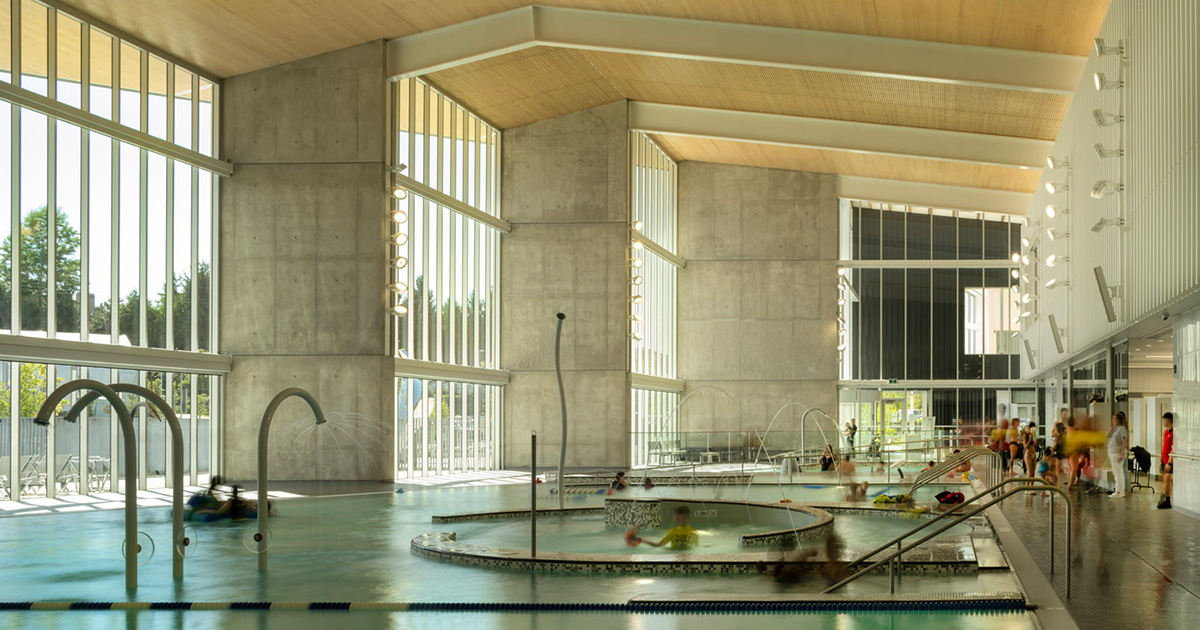
Leisure pool with lazy river, tot zone, and family hot tub.
Multilingual outreach program advancing energy equity
Empower Me is a free education and energy conservation program that helps diverse and multilingual communities save energy, save money, and improve the comfort and safety of their homes. The program produces a variety of information in accessible formats designed for underrepresented communities such as immigrants, newcomers, and low-income households.
Climate Action Decision Making Framework
After declaring a climate emergency in 2019, the City of New Westminster established a Climate Action Reserve Fund for projects that support the City in achieving its climate goals. The Climate Action Decision Making Framework (CADMF) was developed from 2023 to 2024 and is being implemented in 2025. It enables staff to evaluate and rank projects using consistent criteria, including greenhouse gas reduction, equity and reconciliation impacts, readiness, and co-benefits such as health or mobility improvements.
CITY OF RICHMOND
Laying a foundation for embodied carbon reductions
The City of Richmond’s Embodied Carbon Industry Engagement Program (IEP) connects builders, suppliers, policymakers, and designers to collaborate on reducing emissions from construction materials. Its online resource and engagement events bring people together to share practical tools and real-life examples. More than 40 speakers have been featured in various events, some of which have attracted more than 100 participants. There have also been 17 cross-government dialogues to foster regional alignment.
UNIVERSITY OF BRITISH COLUMBIA
Residential Neighbourhoods Vancouver Campus
UBC’s Vancouver campus operates like a community, with more than 17,000 families, students, faculty and staff living right on campus. This makes the University a “living lab” for local governments. One example is UBC’s new mandatory green building rating system for new residential construction, which will help the University create net zero and climate-resilient communities and introduce building performance measures that are higher than the BC Building Code. Version 4.0 of the Residential Environmental Assessment Program was approved in 2025.
VANCOUVER
Thermal safety toolkit
In response to the 2021 heat dome, Metro Vancouver, in collaboration with the City of North Vancouver, Vancouver Coastal Health Public Health, and the City of Vancouver, have developed a policy toolkit aimed at protecting apartment-dwellers from extreme heat. The toolkit identifies 31 policy and program actions designed to encourage more measures to cool suites in existing apartment buildings.
Vancouver Island & Coast
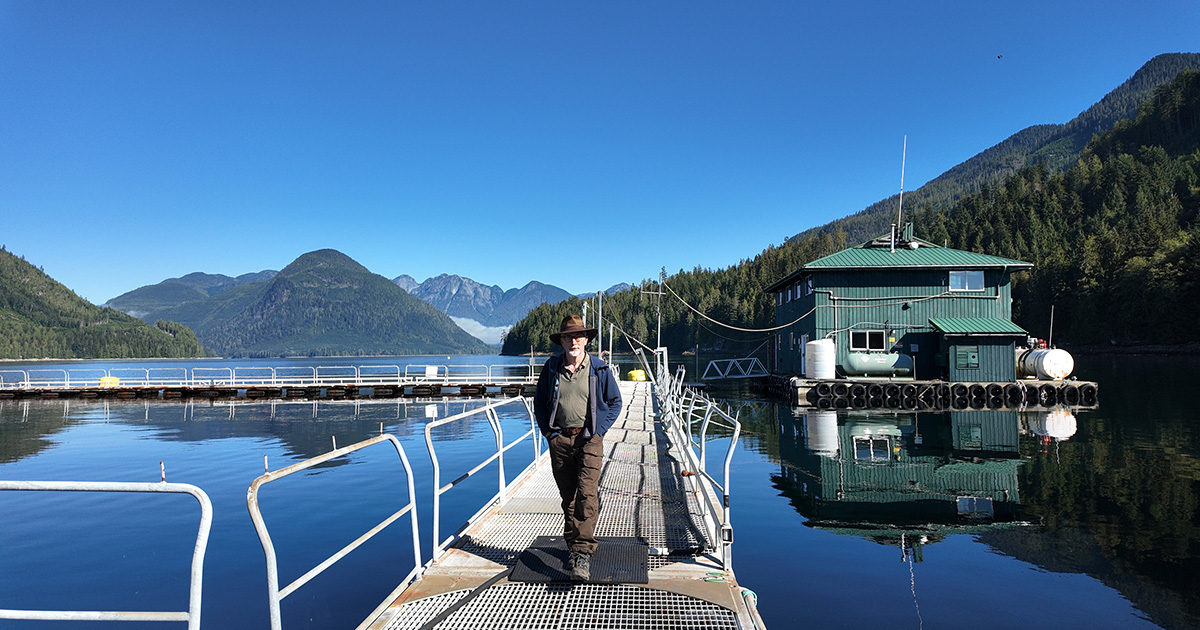
KWIAKAH FIRST NATION
Kwiakah First Nation Centre of Excellence advances stewardship-based economy
A Kwiakah Centre of Excellence in the southern Great Bear Rainforest is reestablishing a Kwiakah First Nation presence in their territory and driving a stewardship-based economy. They have created a floating solar-powered research centre with accommodations and amenities for up to 16 scientists and stewardship staff working in the heart of their newly-declared Special Forest Management Area. This work will support the experimental kelp farm that is exploring the opportunity to use kelp for carbon sequestration, a territorial Guardian program and facilities for studying regenerative forestry.
CITY OF NANAIMO
Energy reduction at Nanaimo’s manufactured home parks
The City of Nanaimo and the Regional District of Nanaimo developed a strategy to support manufactured home park residents to increase energy efficiency and reduce emissions from their homes. During engagement, electrical capacity and management rules were identified as a barrier to heat pump installation so the next phase of the project is addressing these issues.
Home energy retrofit financing program
Nanaimo is just the third city in BC to launch a Property Assessed Clean Energy (PACE) program in which residents are able to apply for up to $15,000 in interest-free financing for home retrofits – to be paid back over 10 years through property taxes. Unlike a bank loan, the financing is tied to the property not the person, and the funds are paid directly to the contractor. The program is fully integrated with the Home Energy Navigator - a free energy concierge service for residents.
NORTH COWICHAN
Net-Zero RCMP detachment
North Cowichan’s new RCMP detachment demonstrates multiple initiatives to reduce fossil fuel use and energy consumption overall. Together with a high-performance envelope, electric heat-pump HVAC, and a 100 kW rooftop solar array, daylight sensors and exterior sunshades cut lighting loads by 25% and reduce cooling demand by 45%. The incorporation of mass timber and local materials have also cut embodied emissions associated with the structure. An integrated project delivery approach delivered the building under budget, despite pandemic-era disruptions.

The North Cowichan / Duncan RCMP detachment.
NORTH SALT SPRING WATERWORKS DISTRICT
Resiliency Strategy
The NSSWD "Building Resiliency Strategy" represents an effort to manage the island’s water supply by using a science-based approach to assess future supply reliability and potential improvements. The strategy outlines a range of projects aimed at increasing community water supply resiliency in the face of climate change and to support local residents. The strategy is already having an impact, and has led to the partial lifting of an 11-year moratorium on new water connections.
OAK BAY
Oak Bay Coolkit: mobilizing the community on climate action
The District of Oak Bay and the Collaborative for Advanced Landscape Planning (CALP) at UBC have collaborated on a toolkit to encourage dialogue about climate change while building awareness and motivating behaviour change, collective action, policy support, and culture change over time. Called the Oak Bay “Coolkit,” it is designed to help local residents take action in their own neighbourhoods.
CITY OF POWELL RIVER
Powell River mid-level connector pathway
A new 1.6 km multi-use pathway is the latest project in Powell River’s vision to create a north-south active transportation “spine” linking the entire community. The new connector links Powell River’s high school with the Recreation Complex and the community’s largest residential neighbourhood.
qathet REGIONAL DISTRICT
Resource Recovery Centre
The qathet Regional District has converted a former landfill site to a centre of community sustainability. The new Resource Recovery Centre is the region’s new transfer station for waste and recyclable materials, designed to maximize waste diversion and enhance public education. Built on a 15.8-acre remediated landfill, the project transformed waste management in the region while restoring more than half the former landfill site as public parkland and trails.
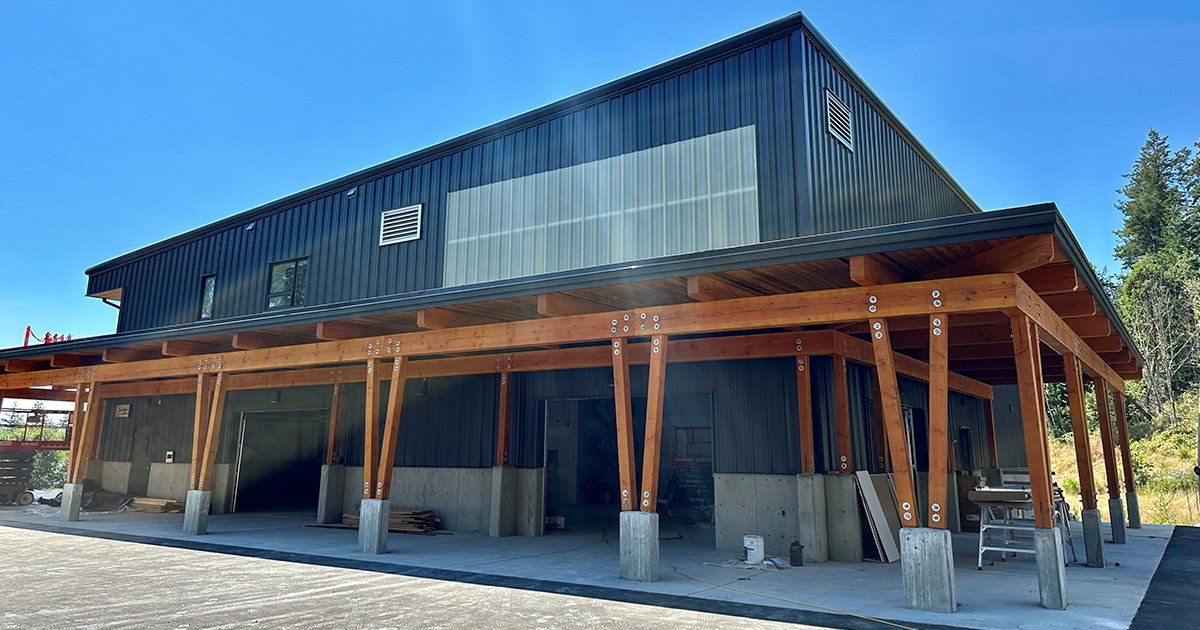
Transfer station for waste and recycling outside of Powell River, BC.
VILLAGE OF TAHSIS
Sharing the distribution of perishables
Often in small, remote communities, accessing fresh food is very challenging. Consider Tahsis, a coastal village in Nootka Sound on Vancouver Island. The nearest grocery store is 66 km away, a drive that takes 90 minutes on mountainous gravel roads. To share the load of collecting food, residents set up Tahsis Buyers Club - a biweekly food box program that pays volunteer drivers a fuel allowance to “bulk shop” and bring food back to the community for distribution among households. This project to share food shopping has saved an estimated 22 tonnes of greenhouse gas emissions compared to if residents made individual trips. The group is also partnering with the school and community groups to encourage local food production and provide workshops on preservation techniques.
UCHUCKLESAHT
Uchucklesaht Tribe Government Climate Action Plan
Uchucklesaht Tribe is a Nuu chah nulth First Nation that in 2024-2025 undertook their first comprehensive climate action planning project addressing mitigation of emissions and adaptation to climate change. The planning process was entirely community-led and included a 20-person working group that met monthly (14 times in total) and presented five community events. A survey accompanying the planning was completed by 20% of residents.
CITY OF VICTORIA
Municipal fleet electrification
The City of Victoria is aiming to convert its fleet to 80% renewable fuel by 2040 and this includes replacing 143 vehicles with electric models by 2030. In fact, this year, the City is deploying its 100th electric vehicle. Some key, recent additions have included Canada’s second all-electric fire truck and a Peterbilt heavy-duty electric truck—the first of its kind in North America—used to haul garbage, organics and garden waste to regional collection centres.
Jump to Region
Interior and Northern BC
- District of Mackenzie
- City of Kamloops
- City of Kelowna
- Nisga'a Nation
- City of Penticton
- Ulkatcho First Nation
Lower Mainland
- City of Coquitlam
- Township of Langley
- City of Maple Ridge
- New Westminster
- City of Richmond
- University of British Columbia
- Vancouver
